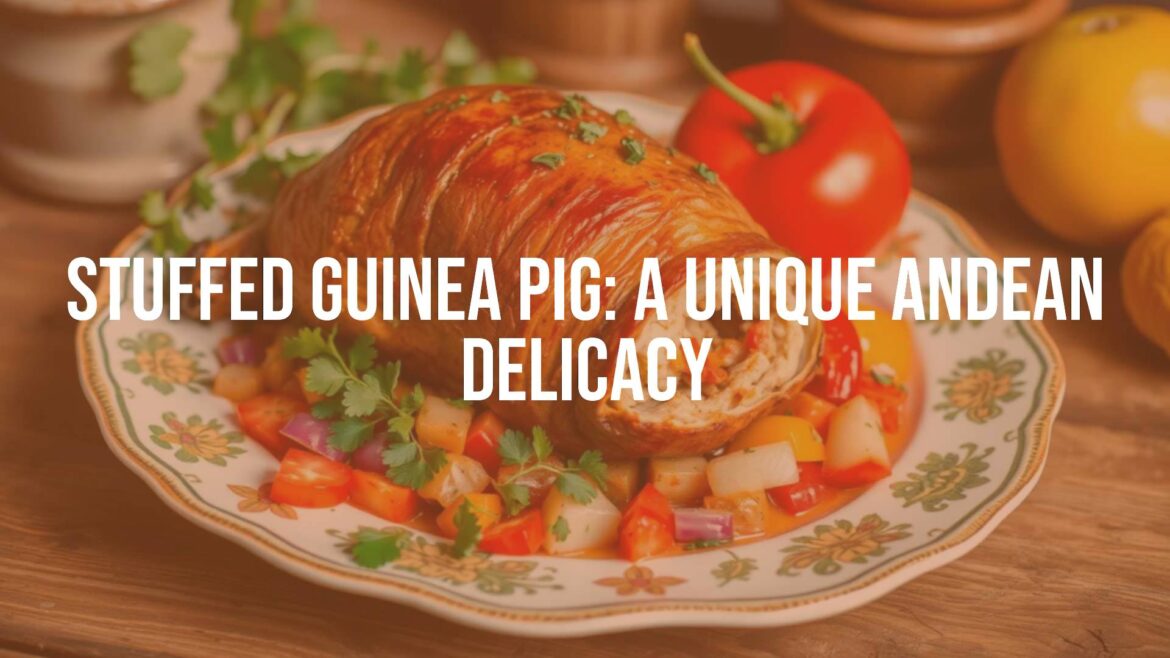Exploring Stuffed Guinea Pig: A Celebrated Andean Tradition
The Culinary Identity of Stuffed Guinea Pig
Stuffed guinea pig, known locally as “cuy relleno,” stands as one of the most distinctive and revered dishes in Peru’s culinary repertoire. This delicacy is rooted in the Andes, where guinea pig has been a vital food source since pre-Columbian times. Preparing guinea pig by stuffing it with flavorful herbs and savory fillings brings a festive twist to this ancient tradition, blending indigenous culinary techniques with influences that have evolved over centuries.
Origins and Historical Roots
The practice of roasting guinea pig dates back thousands of years to the Inca Empire, and possibly earlier civilizations. Archaeological evidence shows that guinea pigs were domesticated in the highlands of Peru and regarded as a valuable protein source. The idea of stuffing the animal with aromatic herbs, spices, and native produce likely developed as contact with other cultures introduced new culinary methods and ingredients. While some regions maintain a simple preparation, in festive settings, stuffing the guinea pig demonstrates both hospitality and the household’s cooking skills.
Cultural Significance in Peru
For many Andean communities, cuy relleno is more than a meal; it is a symbol of cultural heritage and community spirit. Traditionally, the dish is served during festivals, family gatherings, and important communal events. Eating stuffed guinea pig often marks special occasions and brings families together around the table. It is considered both a delicacy and a gesture of respect for guests. In regions such as Cusco, Arequipa, and Puno, stuffed guinea pig holds a prominent position on celebratory menus and has become a cultural ambassador for Peruvian gastronomy abroad.
Distinctive Ingredients and Preparation
The main ingredient—the guinea pig—is locally sourced, often raised specially for culinary use. The stuffing varies by region and household but commonly includes a mixture of native Andean herbs such as huacatay (Peruvian black mint), garlic, chopped onions, and spices. Some versions add ground nuts or grains, and others incorporate vegetables, hard-boiled eggs, or even cheese for a richer filling. The stuffed animal is usually marinated, then oven-roasted or cooked over an open fire, allowing the skin to become crisp while the filling remains moist and aromatic.
Flavors and Presentation
Stuffed guinea pig is celebrated for its robust, earthy flavors, deeply influenced by the use of huacatay and Andean spices, which impart a unique herbal depth. The meat itself is tender, with a flavor often described as somewhere between dark chicken and rabbit. Visually, the dish makes a dramatic statement; the whole animal, golden and crisp, is typically served whole atop a platter. It is most commonly accompanied by regional staples such as roasted potatoes, corn (choclo), and spicy aji sauces—colorful accompaniments that enhance both taste and presentation.
How It Is Traditionally Enjoyed
In its most authentic form, cuy relleno is a communal dish, eaten with hands rather than utensils—a nod to ancient customs. Guests share directly from the platter, savoring both the crispy skin and the flavorsome stuffing. The eating ritual strengthens bonds among attendees and reflects the values of sharing and hospitality, integral to Andean culture.
A Window into Peruvian Heritage
Although it may surprise newcomers, stuffed guinea pig is a proud emblem of Peru’s diverse gastronomy. It honors ancient agricultural practices and indigenous flavors while also embracing creativity in its preparation. For those who seek an authentic taste of Peru’s highlands, experiencing cuy relleno provides not just a meal but an entry point into the rich tapestry of Andean life and tradition.


